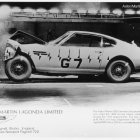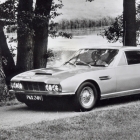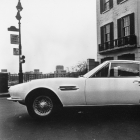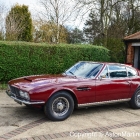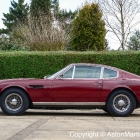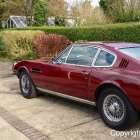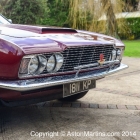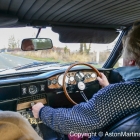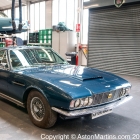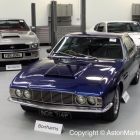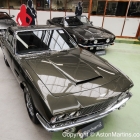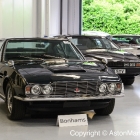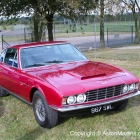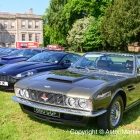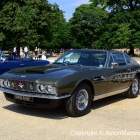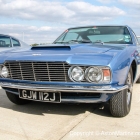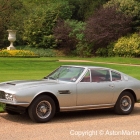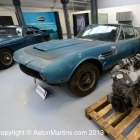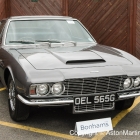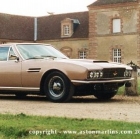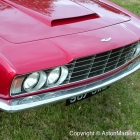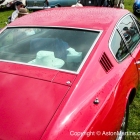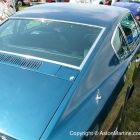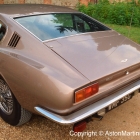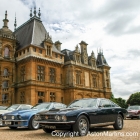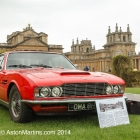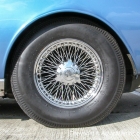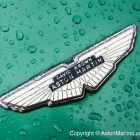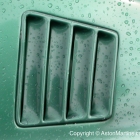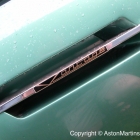Both increased weight and a greater frontal area dented performance slightly although the DBS was still fast for (almost) a full four seater (141mph, 0-60mph in 7.1 seconds). Identification of the DBS over the later DBS V8 is easily afforded by the attractive wire wheels. The torque produced by the V8 needed stronger alloy wheels to be fitted.
A distinguishing feature of the DBS and DBS V8 are the four quartz iodine headlights set into a new interpretation of the Aston Martin grille. The view of the front shows clearly that the DBS was a very wide car at 183cm (15cm more than the DB6).
There are two distinct series of DBS as distinguished by the AMHT, both of which are illustrated here. The earlier cars, sometimes known as the Series 1 have louvers in the ‘C’ post behind the rear side windows and a plain panel under the rear screen. On introduction of the DBS V8, the 6 cylinder DBS was modified in line with the new car; these later cars are easy to spot as they have no louvers in the ‘C’ post, but do have louvers under the rear window. Other changes to the Series 2, introduced in January 1970, are deepening to the panels under the nose and tail, and a deeper stainless steel sill covers.
Production run of the DBS stretched between September 1967 and April 1972 during which 803 examples were produced. A few chassis numbers remained unused as the body-in-white initially intended to become the six cylinder cars were actually finished as DBS V8. Thus the DBS, even through it was in production for almost 5 years, they are rarer than the DB5. Although no convertible DBS Volante was made at the Newport Pagnell factory, specialist coach building firms such as Banhams
In the 1969 James Bond film, On Her Majesty’s Secret Service, George Lazenby made his first and last appearance as 007 and drove what appeared to be standard DBS. This car is celebrated in this wonderful site dedicated to the rebuild of a highly accurate 007, DBS replica. – ww.ohmssdbs.com. Another very interesting site featuring the DBS is www.dbsvantage.com. But the most famous DBS was not the Bond car but a car driven by a future Bond, Roger Moore, in the ITC TV programme, The Persuaders. The Bahamas Gold car was adorned with the cherished registration plate BS1 and featured alloy wheels as fitted to the DBS V8 to make the more humble 6 cylinder look like its more powerful younger brother.
The DBS has for many years been seen as the Cinderella of the Aston Martin world, outshone by the earlier seminal DB5 and the more powerful later AM V8 models. Many were cannibalised for their precious engine and gearbox, the rest of the cars were parted out. Nowadays the DBS is very much in the ascendancy and prices have firmed up for both rough barn finds to concours examples.

This is a later DBS Vantage, a series 2 if you wish, showing the features introduced alongside the DBS V8
There are some people that call the six cylinder DBS, ‘DBS6’ as a way to distinguish the car from the DBS V8. This cannot be in anyway encouraged – the name DBS6 was never been used by the factory and is not recognised by the Aston Martin Heritage Trust.







